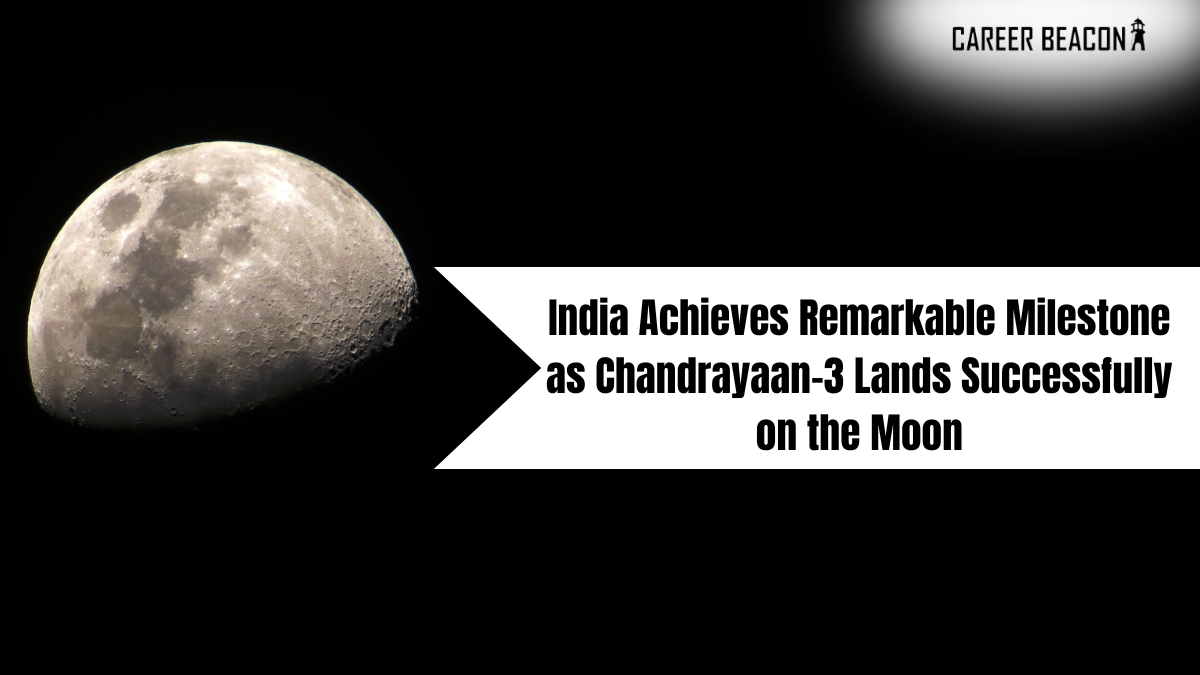
India Achieves Remarkable Milestone as Chandrayaan-3 Lands Successfully on the Moon
In a momentous achievement that has captured the attention of the world, India’s space agency, the Indian Space Research Organisation (ISRO), has once again demonstrated its prowess by successfully landing Chandrayaan-3 on the Moon. This remarkable feat not only showcases India’s technological capabilities but also signifies a significant step forward in the nation’s space exploration journey. Let’s delve into the details of this historic accomplishment and its implications for India and the global scientific community.
The Chandrayaan Mission Series: A Brief Overview
Chandrayaan-3 is the latest installment in India’s Chandrayaan series of lunar missions, following the success of Chandrayaan-1 and Chandrayaan-2. The series is aimed at exploring the Moon’s surface, studying its composition, mapping its resources, and unraveling its geological history. Chandrayaan-1, launched in 2008, was the first Indian mission to the Moon and made significant contributions, including the discovery of water molecules on the lunar surface. Chandrayaan-2, launched in 2019, aimed to further these studies and included an orbiter, a lander (Vikram), and a rover (Pragyan). Although the Vikram lander’s attempt to soft-land on the Moon’s surface faced challenges, the orbiter continues to provide valuable data.
Chandrayaan-3: A Leap Forward
Chandrayaan-3, designed as a lander-rover mission, represents India’s resolute determination to conquer the challenges posed by lunar exploration. This mission focuses solely on the critical landing aspect, separating it from the orbiter responsibilities that were carried out by its predecessor. By narrowing the mission’s scope, ISRO engineers and scientists were able to dedicate their expertise to refining the landing technology, resulting in a more streamlined approach.
The Triumph of Technological Innovation
The successful landing of Chandrayaan-3 can be attributed to the exceptional technological innovations developed by ISRO. The mission incorporated lessons learned from previous attempts, utilizing advanced navigation systems, improved communication strategies, and enhanced propulsion techniques. The engineers’ meticulous planning and rigorous testing ensured that the lander could navigate the Moon’s challenging terrain and execute a safe and controlled landing.
Scientific and Global Implications
Chandrayaan-3’s success holds immense scientific significance. The rover onboard the lander will enable detailed surface exploration, collecting data that could offer insights into the Moon’s geological evolution, resource distribution, and potential for future lunar colonization. Additionally, the mission contributes to the broader global scientific community’s understanding of celestial bodies and their formation, shedding light on questions about the Moon’s origins and its interactions with Earth.
Inspiration and International Collaboration
The success of Chandrayaan-3 serves as a source of inspiration for India’s burgeoning scientific community, encouraging more young minds to pursue careers in STEM fields. Furthermore, the collaborative nature of space exploration is highlighted through this achievement. As nations come together to share knowledge, resources, and expertise, humanity advances its understanding of the universe collectively.
Conclusion
India’s triumph with Chandrayaan-3 stands as a testament to the nation’s unwavering commitment to space exploration and technological innovation. The successful landing on the Moon not only expands our scientific knowledge but also strengthens India’s position in the global space exploration arena. As ISRO continues to push the boundaries of exploration, we can only anticipate even greater achievements and groundbreaking discoveries in the not-so-distant future.


